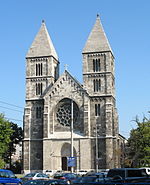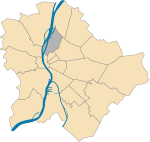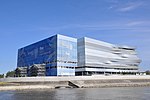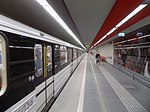Forgách utca metro station
European rapid transit stubsForgách familyHungarian building and structure stubsHungarian railway station stubsHungary transport stubs ... and 2 more
M3 (Budapest Metro) stationsRailway stations opened in 1990

Forgách utca (Forgách Street) is a station on the Budapest Metro Line 3 (North-South). It is located in Angyalföld district, beneath Váci út between its intersections with streets Fáy utca and Forgách utca. The station was opened on 14 December 1990 as part of the extension from Árpád híd.
Excerpt from the Wikipedia article Forgách utca metro station (License: CC BY-SA 3.0, Authors, Images).Forgách utca metro station
Váci út, Budapest Angyalföld
Geographical coordinates (GPS) Address Nearby Places Show on map
Geographical coordinates (GPS)
| Latitude | Longitude |
|---|---|
| N 47.539166666667 ° | E 19.069722222222 ° |
Address
Váci 95 Center
Váci út 95
1139 Budapest, Angyalföld
Hungary
Open on Google Maps










